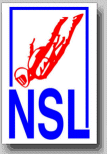
National
Skydiving
League
226 Pecan Street
Deland FL 32724
tel: (386) 801-0804
© 2003 - 2024
All Rights Reserved


226 Pecan Street
Deland FL 32724
tel: (386) 801-0804
© 2003 - 2024
All Rights Reserved

NSL News Coverage of the FAI Indoor World Cup 2024 |

There are many 4-way competitors who simply like the challenging Block 10 technique, even if there is more to do for the rear piece than for center outside and point.
The front piece has usually the more entertaining moves and gets more than enough compensation for less work at the current Block 10.
However, there are also people who are looking at the bigger picture and question the reason for the change, the arguable "imbalance" of slot switchers and memory between both pieces.

Former 4-way competitor and current national judge Steve Miller reminded the Sun Path Products NSL News that there are enough practical examples where teams were dealing with the slot switchers in different ways, and Arizona Airspeed's former technique for Block 16 (Compressed Accordian - Box) is one of the best examples:
"The old Airspeed engineering had the rear piece moving backward on Block 16. I actually like that move better for the rear piece, but both are fun."

In other words, John Behrendt Petersen's and Trude Sviggum's understanding of the imbalance is not necessarily the same one for teams with a different engineering system, such as teams from France or Russia.
In fact, there is no rule that defines how teams have to deal with the six critical blocks (3, 5, 10, 12, 16, 17). There are even more blocks that teams are currently handling in different ways. The standard "western continuity plan" starts Block 4 (Monopod - Monopod) with the point position curved well towards the center inside slot, while the finishing shape of the second Monopod has the point on the side of the the center outside, which could easily create memory for the front piece. Similar counts for Block 19.

The other two of the slot switchers for only one piece (3, 12) have the same options. There is no rule that determines the front piece to perform the 540 for Block 12 (Bundy - Bundy), and even Block 3 (Side Flake Opal - Turf) has other options than the standard and popular one.
Each team can decide differently upon the specific balance between the critical blocks and may follow the "standard continuity plan" or not. Changing Block 10 neither seems to be a necessary nor the most popular option - according to the first feedback by the valued audience...